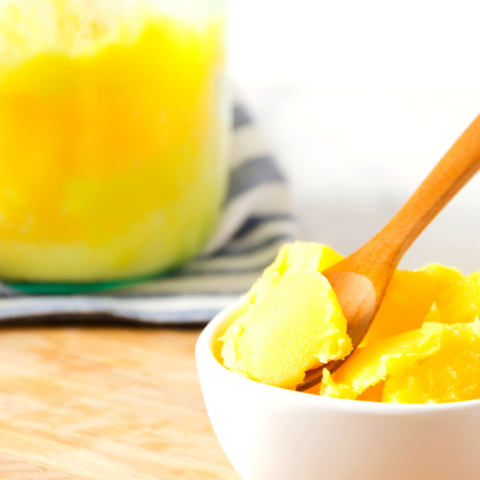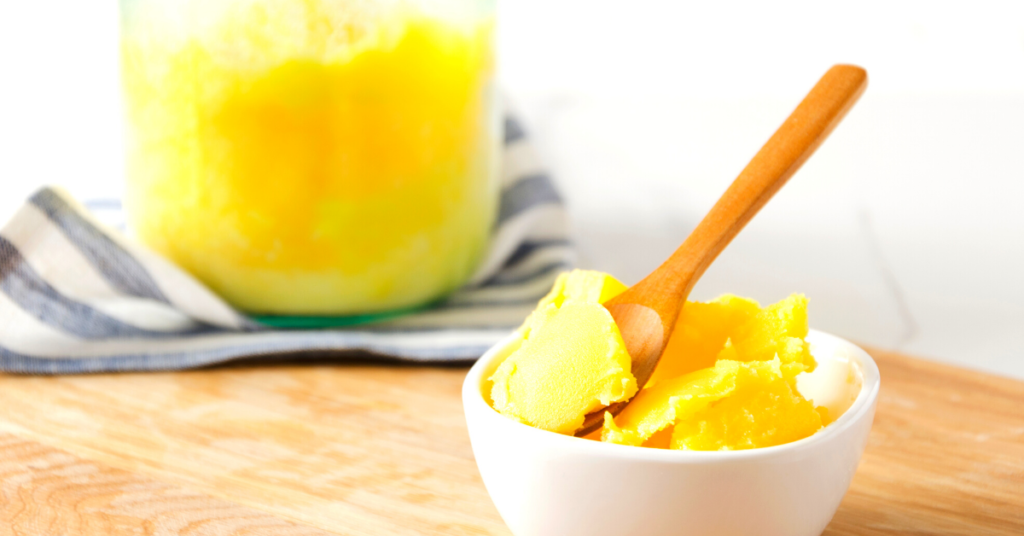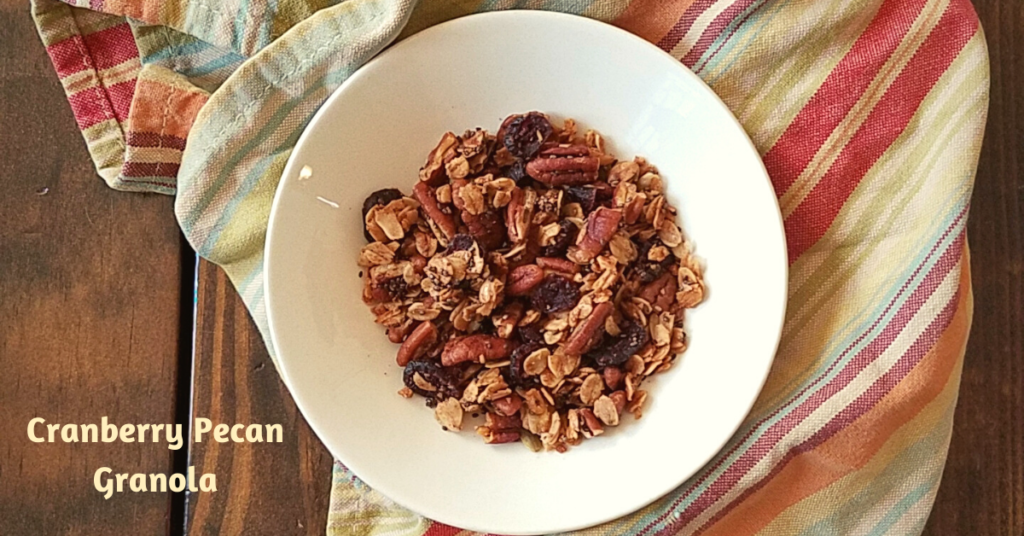Ghee is a fantastic dairy-free option for all your cooking and baking needs. You can easily make ghee at home with a few sticks of butter and a little bit of time.
I started making ghee after Anghus was born during our breastfeeding journey. If I consumed too much dairy or too many nuts, as I mentioned in this post, he would have a small dry skin patch show up on his legs. Dry skin is a good indication that littles are reacting to something in their diet or yours if you are breastfeeding. So I cut those things out and within a few days, the patch was gone.
I purchased ghee a few times but, in all honestly, it is costly to buy a quality one. Fat is very important to all parts of our body, especially the brain, so making sure to have high-quality fats in your diet is my number one piece of advice to improve your health.
While I do not mind spending money on quality food, I knew that making it would save money….and I do like to be a bit frugal when I can be!
After trying to make it once, I knew it was definitely a kitchen task that I could easily fit into my new mom life! It is easy enough to make that I made it often with Anghus all snuggly in our Solly Baby wrap!
The holistic nutritionist in me was happy to still have a very healthy source of fat in my diet!
What is ghee
Ghee is butter that has been heated for a long enough time that the milk solids solidify and can be removed. It has a more intense butter flavor and a slightly nutty taste to it.
Benifits
Besides having a great taste, ghee has some other great benefits.
Ghee has a high smoke point of 485 degrees, making it great for baking as well as frying foods. The benefit of a high smoke point is that it reduces the risk of oxidation occurring, meaning that there are no harmful free radicals forming.
As mentioned before, ghee is dairy-free. Making it a great cooking fat if you can not tolerate lactose or casein.
Since it is made from butter you are still getting many of the fat-soluble vitamins that are important for a healthy body. These include vitamin A, E, and K.
The fatty acid profile of ghee is full of many beneficial fatty acids. These include:
- Conjugated linoleic acid – this fatty acid may help to reduce body fat and inflamation. As well as having a hand in preventing cancer formation.
- Butyric acid – this short-chain fatty acid is critical for gut health!
- Medium-chain fatty acid – like coconut oil(another of my favorite oils), these fatty acids can help to boost fat loss .
What you need
Heavy bottomed pot – Stainless steel is my choice. There are always some bits of browned milk solids that get stuck to the pan and the stainless can take a good scrubbing.
Butter – Grass-fed butter, like Kerrygold or Vital Farms, will provide you with more nutrients than standard butter.
Mesh sieve – You will use this for straining.
Cheesecloth – Look for an unbleached option. If you do not have a cheesecloth on hand, a couple of coffee filters will work too.
Storage Containers – I find that glass jars work best. I typically use pint-sized mason jars to store my ghee.
How to Make Ghee at Home
Add butter to the pan.
Heat over medium-low heat until it begins to simmer
Skim white foam from the top of the butter.
Continue to simmer until all milk solids have turned brown, adjusting heat as needed so the butter does not burn.
Once all milk solids have browned, turn off the heat.
Carefully strain the ghee through a cheesecloth or a couple of coffee filters placed in a mesh sieve.
Pour into desire storage containers.
How to store
I like to put my ghee in the frig until it is set, or hard, then take it back out for easy use.
Since the ghee you make at home has all the milk solids removed, it can be stored on the counter without any worry that it will spoil.
While storing ghee on the counter is fine, I do suggest storing some in the frig when making larger batches. This will just help to keep it fresh.
Ways to use ghee
This dairy-free alternative can be used in any way you would use butter. So think baking, sauteing, frying….or spreading on top of a piece of freshly baked sourdough or baked good.
You can mix up a batch of my Banana Oatmeal Cookies or Sourdough crackers using this healthy fat. Or even fry up some Salmon Patties.
I also use it as my cooking fat when roasting potatoes.
The possibilities go on and on, so please don’t be afraid to add ghee into your kitchen. I promise you won’t regret it!

Ghee
Ingredients
- Butter
Instructions
- Add butter to the pan.
- Heat over medium-low heat until it begins to simmer.
- Skim white foam from the top of the butter.
- Continue to simmer until all milk solids have turned brown, adjusting heat as need so the butter does not burn.
- Once all milk solids have browned, turn off the heat.
- Carefully strain the ghee through a cheesecloth or a couple of coffee filters placed in a mesh sieve.
- Pour into desire storage containers.
Notes
Use grassfed butter to make ghee. It provides more nutrients.
I like to put ghee into the frig to harden up, then move it back to the counter for easy use.
Let me know in the comments if you make a batch of ghee and your favorite way to use it!


